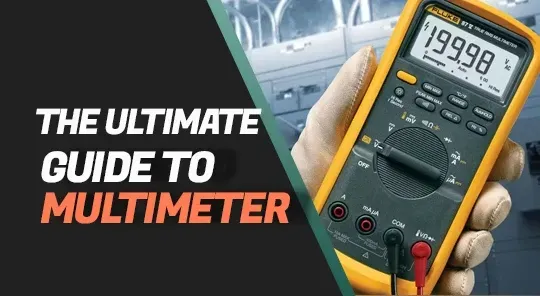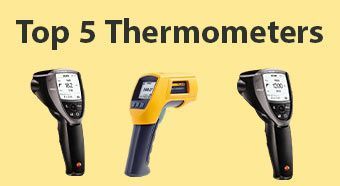How to use clamp meter
You'll need specialized equipment to measure things like voltage and current. Current is frequently measured by devices like analog and digital multimeters, but in order to enter the test leads of these devices into the circuit in series, the circuit must be severed. In many situations, doing so is neither feasible or feasible. Electric shock is one risk associated with cutting the circuit. In these cases, clamp meters are a practical option. A thorough description of clamp meter operation and associated safety measures may be found in this brief article.
The basic principles of utilizing a clamp meter
An understandable introduction to the use of load current and leakage current clamp meters is given in this section.
Details that are relevant to both types
Clamp meters for leakage current and load current are often used in the same fundamental way. First, select the current type that is suitable for the circuit you want to measure, if your clamp meter lets you select between DC and AC current. Next, adjust the measurement range according to the current's magnitude. Remember to conduct zero-adjustment while measuring a DC current. When you're ready, clamp the clamp meter around the wire you want to measure by opening its jaws. For the most accurate measurement, place the wire in the middle of the clamp.
Employing a clamp meter for load current
Only one wire may be clamped around by clamp meters used to measure load currents. Clamping the instrument around several wires at once can impair accurate measurement, so proceed with caution.
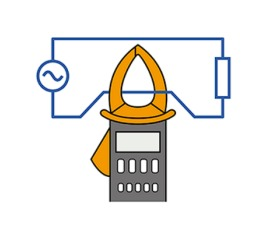
Using a clamp meter for leakage current
A little extra care is needed when using clamp meters made to measure leakage currents. Only ground wires need to be measured. Clamp the device around each wire (two for single-phase circuits, three for three-phase circuits) while measuring an AC circuit
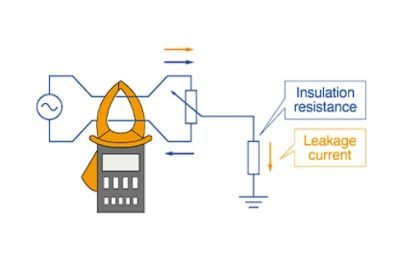
Two wires may be clamped at the same time in order to measure leakage current. When many loads are connected, the leakage current, which is defined as a current that passes through the insulating resistance of the load and to the ground, can reach several tens of μA. The little variation flowing in both directions may be found and recognized as leakage current with the use of a clamp meter.
Things to avoid
When using a clamp meter, there are certain safety concerns to be aware of, much like with analog and digital multimeters. An overly high current flowing to the clamp sensor, for instance, might harm a clamp-on power meter if you keep it connected after using it
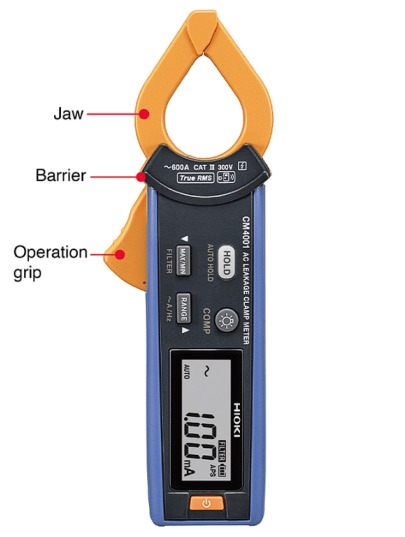
Additionally, avoid clamping an instrument to a bare conductor; clamp meters should only be used to measure insulated conductors (although this depends on the specific current sensor in use). Because they don't involve cutting the wire being measured, clamp meters provide a high degree of safety; nonetheless, it's crucial to operate them at or below the maximum rated terminal-to-ground voltage. Lastly, when using the device, avoid touching anything on the jaw side of the barrier since it represents the safety limit.
Selecting an ideal clamp meter
As previously mentioned, clamp meters come in a range of versions that are made for distinct uses, such as based on whether they are intended to measure DC or AC current. As a result, you must select an instrument according to the use you want to use it for. For instance, a clamp meter that can measure DC current is required to measure a solar cell, a car battery, or an uninterruptible power supply (UPS)
On the other hand, an AC clamp meter is required if you want to measure the load current or leakage current in an AC circuit, such as power lines or lights in a house, building, or facility. Select a leakage current clamp meter if you need to measure leakage currents resulting from insulation flaws or current flowing in an electrical equipment ground wire, or an AC load current clamp meter for routine measurement applications.
How to Use clamp meters safely
By clamping around a wire—which doesn't need to be cut—clamp meters are handy devices that can measure current and other characteristics. Since all that is needed to operate them safely is to clamp the instrument around a wire, they are simple to use. However, if not utilized correctly, these tools might be harmful. Therefore, to guarantee safe use, be sure to consult this article's guidelines and safety measures regarding clamp meter selection and use.
